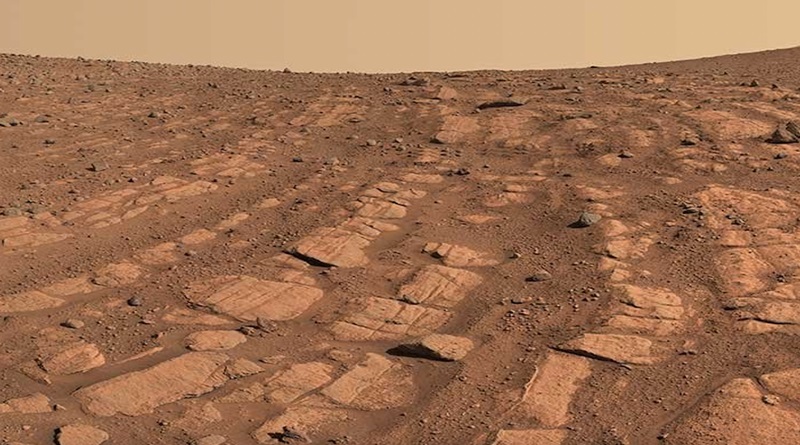Perseverance Marks 1000 Days on Mars, Unravels Secrets of the Planet’s Ancient River

New Delhi: NASA’s resilient Perseverance rover has achieved a significant milestone, completing 1,000 Martian days, or sols, since its historic landing on the Red Planet. During this time, it has meticulously explored the remnants of an ancient river and lake system within the Jezero Crater, uncovering valuable geological samples that could provide insights into Mars’ watery history.
At the American Geophysical Union fall meeting in San Francisco on December 12, 2023, scientists shared that Perseverance has collected 23 samples, offering glimpses into the planet’s past conditions. Notably, two samples, “Lefroy Bay” and “Otis Peak,” stand out—one rich in fine-grained silica resembling Earth materials known to preserve fossils, and the other abundant in phosphate, a chemical often associated with biological activity.
Ken Farley of Caltech, the project scientist for Perseverance, highlighted the significance of the Jezero Crater’s deltaic landscape, chosen for its potential to have harbored and preserved signs of life. The rover’s exploration has reconstructed the crater’s history, from its formation nearly 4 billion years ago to the subsequent emergence of igneous rocks and the development of a lake.
Perseverance’s close-up inspections have provided detailed insights into Jezero’s history, enhancing our understanding beyond orbital images. The collected samples, stored in metal tubes, await the Mars Sample Return campaign—a collaboration between NASA and the European Space Agency to bring Martian samples back to Earth for advanced analysis.
Using an abrasion tool, Perseverance exposes fresh rock surfaces, which are then analyzed by instruments like the Planetary Instrument for X-ray Lithochemistry (PIXL). PIXL has identified carbonates and silica at a site called “Bills Bay,” conducive to preserving organic molecules. Another site, “Ouzel Falls,” revealed iron associated with phosphate, a crucial component of DNA and cellular energy processes.
Morgan Cable, deputy principal investigator of PIXL at JPL, highlighted the ideal conditions for discovering signs of ancient life due to the presence of carbonates, phosphates, and silica—all indicative of a once-habitable environment. The rover continues its quest in its fourth science campaign, exploring the edges of Jezero Crater where carbonate deposits offer the promise of new discoveries.






Pingback: Pretty Gaming
Pingback: 토토싸이트
Pingback: content
Pingback: chat rooms
Pingback: สล็อตวอเลท ฝากถอนไว ไม่ต้องแจ้งสลิป
Pingback: cinemakick
Pingback: Rec1688 ทางเข้าเว็บเดิมพันออนไลน์เว็บตรง
Pingback: cinemakick .com
Pingback: recipesjelly
Pingback: ของพรีเมี่ยม
Pingback: UOD
Pingback: เว็บตรงฝากถอนง่าย
Pingback: slot99
Pingback: หวยลาว พัฒนา
Pingback: รับติดตั้งระบบระบายอากาศ
Pingback: ufa789